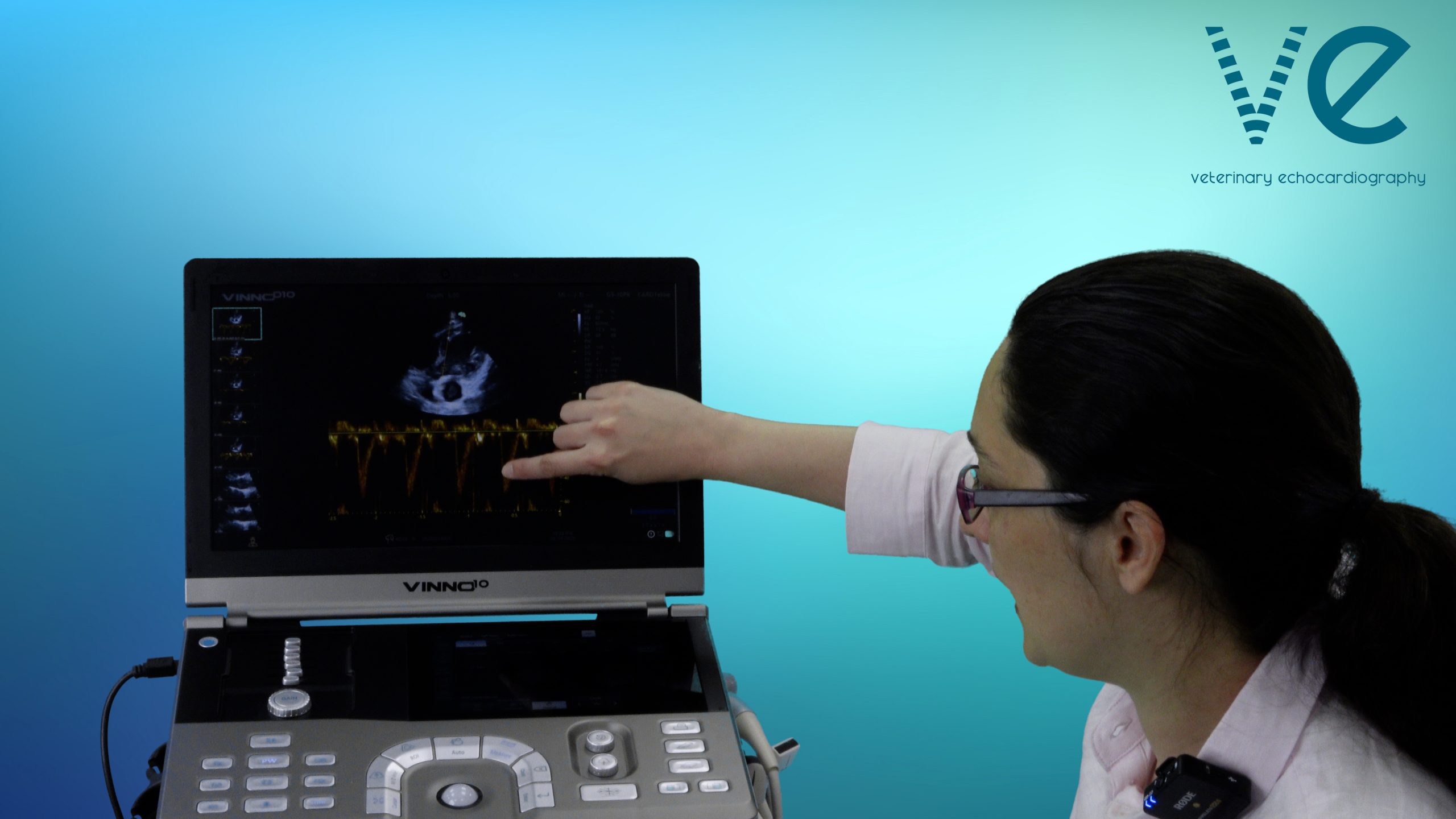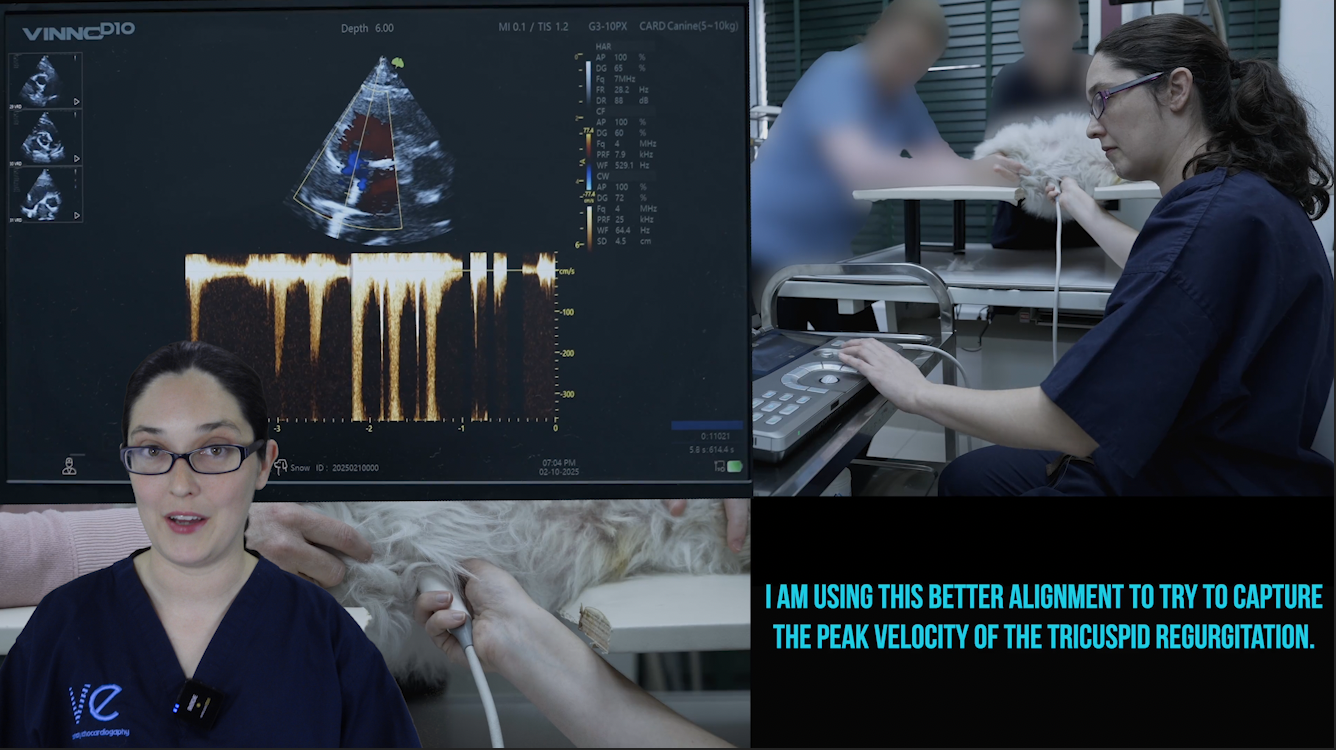
Pulse wave Doppler for LVOT vs aortic velocities
I met with one of my RVC colleagues last week in preparation for a trip to London Zoo to see a silverback gorilla (him doing the ECG, and I the

I met with one of my RVC colleagues last week in preparation for a trip to London Zoo to see a silverback gorilla (him doing the ECG, and I the

If your feline patient has a severely dilated and/or impaired left atrium, it is always wise to check the left atrial appendage. This can be seen from the right parasternal

Exclusively for Quantum users and Confidence in Echocardiography members, we are excited to announce the launch of our new weekly live reporting sessions. From September, these will be held every

We are just coming off the high of a fantastic echo day with three amazing veterinarians, Professor Luis Fuentes, and some absolutely wonderful patients/volunteers. The combination of the hottest day

All experienced sonographers follow a scanning protocol, whether their specialism is cardiac, abdominal, reproductive – it doesn’t matter. Not having this structure is one of the major factors that holds

Welcoming a litter of puppies into the world is an exciting, emotionally charged experience for any dog owner or breeder. From the moment of mating, the anticipation builds—counting days, watching

Puppy resorption—also known as foetal reabsorption—is one of the lesser-discussed but critical aspects of canine reproduction. For breeders and pregnancy scanners alike, understanding this phenomenon is essential to offering high-quality

Should Post-Whelp Ultrasound Scanning Be Standard Practice? Post-whelp scanning remains one of the most underdeveloped skills in paraprofessional ultrasound, yet its potential to improve maternal and neonatal outcomes is immense.

It is important to accurately measure septal wall thickness with echocardiography, because left ventricular hypertrophy occurs in many of the heart diseases we see in small animals. Wall thickness measurements

Those of you who’ve trained with the Animal Ultrasound Association will already be familiar with how different probe types can affect image quality. But seeing it in action—like in the

I am just back from a trip to the Middle East, where I was scanning and teaching echocardiography. I got to see some really unusual and challenging cases; in one

The Animal Welfare Committee (AWC) recently published an article titled “Opinion on the Welfare Implications of Specialised Canine Reproductive Practices” on December 19th, 2024. This piece has sparked concern among

Below is a letter from the AUA to the AWC, in response to their recommendations on the use of ultrasound in pregnant canines. Dear Animal Welfare Committee, I am writing

‘Athlete’s heart’ can be very difficult to distinguish from a pathological condition like early stage dilated cardiomyopathy on a POCUS-style heart scan. This is because, in an athletic dog, the

A common question asked of me from intermediate-level learners of echocardiography is how to obtain and measure isovolumic relaxation time (IVRT). However, it is important to understand that IVRT can

… Simple is better, or at least just as good In our small animal echocardiography training programme, we talk a lot about longitudinal function and its importance in assessing left

Hydrocephalus is a condition that not all veterinary professionals, breeders, or pet owners are familiar with, but for Registered Veterinary Nurse (RVN) and AUA trainee Jessica Blyth, it is a

It was great to meet so many enthusiastic people at September’s hands-on echocardiography day in Bromley, southeast London. We kicked off the session with a look at what normal looks

Basic diastolic function assessment webinar: Tuesday the 20th of August 2024, at 7pm London (UK) time. Register for free here. Systolic and diastolic dysfunction are inextricably linked. If your canine

Cor triatriatum is a congenital heart defect that results in one of the atria being divided into two chambers. When it affects the right atrium, it is termed “cor triatriatum

Ultrasound courses are frequently organised by topic. On a small animal pregnancy scan course, you might have one module on the appearance of pregnancy on ultrasound, one on the appearance

The paper ‘Automated echocardiographic left ventricular dimension assessment in dogs using artificial intelligence‘ was published last month. On the face of it, it seems like it’s a paper all about

We’ve had a busy few months here at the Animal Ultrasound Association, finishing off all the filming for our canine and feline pregnancy scan courses, and working with Sarah to

EPSS stands for “E–Point to Septal Separation,” and refers to the distance between the tip of the septal (or anterior) mitral valve leaflet and the interventricular septum during diastole. It

Have you ever felt the positive energy when like-minded individuals come together to share knowledge and expertise? That’s exactly what we experienced at this year’s British Medical Ultrasound Society conference,
© 2025 | AUA – All Rights Reserved
